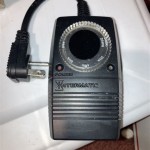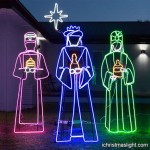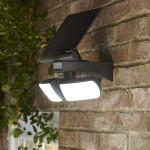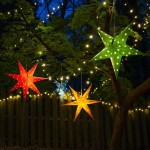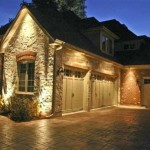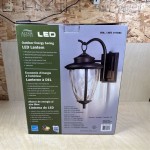Illuminating Your Landscape: A Comprehensive Guide to Outdoor Electric Garden Spot Lights
Outdoor electric garden spot lights are an increasingly popular choice for homeowners seeking to enhance the beauty and security of their properties. These lights offer a versatile and energy-efficient solution for highlighting specific features of a garden, pathway, or architectural element. Understanding the different types, features, and installation considerations is crucial for making informed decisions and achieving optimal results.
The primary function of outdoor electric garden spot lights is to provide focused illumination. Unlike flood lights, which cast a wide beam, spot lights concentrate light onto a smaller area, creating a dramatic effect and drawing attention to desired focal points. This precision lighting can be used to accentuate trees, shrubs, statues, water features, and even structural components of a building.
Understanding the Different Types of Outdoor Electric Garden Spot Lights
The market offers a diverse range of outdoor electric garden spot lights, each with unique characteristics and applications. Distinguishing between these types is essential for selecting the most appropriate option for a specific landscaping project. The key types include LED, halogen, and incandescent, though LED options have largely overtaken the others in popularity due to their efficiency and longevity.
LED Spot Lights: Light Emitting Diode (LED) spot lights are the most energy-efficient option available. They consume significantly less electricity than halogen or incandescent bulbs while providing comparable or superior illumination. LED lights also boast a much longer lifespan, reducing the frequency of bulb replacements. Furthermore, LED technology allows for a wider range of color temperatures and beam angles, offering greater flexibility in design. Their low heat output also makes them safer to use around plants.
Halogen Spot Lights: Halogen spot lights, while less efficient than LEDs, offer a brighter, whiter light compared to traditional incandescent bulbs. However, they consume more energy and have a shorter lifespan, leading to higher operating costs. Halogen bulbs also generate more heat, which can be a concern in certain environments. They are increasingly less common with the rise of efficient and versatile LED technology.
Incandescent Spot Lights: Incandescent spot lights are the least energy-efficient option and have the shortest lifespan. They produce a warm, yellowish light, which may be desirable in some applications. However, their high energy consumption and frequent bulb replacements make them less appealing compared to LED alternatives. They are rarely used in modern outdoor lighting installations.
Beyond the bulb type, spot lights can also be categorized by their mounting style. Common mounting styles include stake lights, which are easily inserted into the ground, and surface-mounted lights, which are attached to walls, decks, or other structures. Stake lights offer flexibility in placement and are ideal for illuminating gardens and pathways. Surface-mounted lights provide a more permanent solution and are often used for accentuating architectural features.
Key Features to Consider When Selecting Outdoor Spot Lights
Beyond the type of bulb and mounting style, several other features contribute to the performance and usability of outdoor electric garden spot lights. These features include brightness, color temperature, beam angle, weather resistance, and dimming capabilities.
Brightness: The brightness of a spot light is measured in lumens. The appropriate lumen output depends on the size and distance of the object being illuminated. For subtle accent lighting, a lower lumen output may be sufficient. For highlighting larger objects or providing more intense illumination, a higher lumen output is recommended. Consider the existing ambient light levels when determining the necessary brightness.
Color Temperature: Color temperature is measured in Kelvin (K) and describes the warmth or coolness of the light emitted. Lower Kelvin values (e.g., 2700K) produce a warm, yellowish light, while higher Kelvin values (e.g., 5000K) produce a cool, bluish-white light. The choice of color temperature depends on the desired aesthetic. Warm light is often used to create a cozy and inviting atmosphere, while cool light can enhance clarity and visibility.
Beam Angle: The beam angle determines the width of the light beam. Narrow beam angles create a concentrated spot of light, ideal for highlighting small objects or creating dramatic shadows. Wider beam angles provide a more diffused light, suitable for illuminating larger areas or providing general illumination. Adjustable beam angles offer greater flexibility in controlling the light distribution.
Weather Resistance: Outdoor spot lights must be able to withstand exposure to the elements. Look for lights with a high Ingress Protection (IP) rating, which indicates the level of protection against water and dust. A rating of IP65 or higher is generally recommended for outdoor applications. Materials like stainless steel, aluminum, and durable plastics are commonly used for weather-resistant housings.
Dimming Capabilities: Dimmable spot lights allow for adjusting the brightness to create different moods and conserve energy. Dimming can be controlled manually or automatically using a timer or sensor. Ensure that the spot lights are compatible with the dimming system being used.
Smart Features: Some modern outdoor spot lights include smart features such as Wi-Fi connectivity, allowing remote control via a smartphone app. These features can include scheduling, color changing, and integration with other smart home devices.
Installation Considerations for Outdoor Electric Garden Spot Lights
Proper installation is crucial for ensuring the safety and performance of outdoor electric garden spot lights. Planning the layout, selecting the appropriate wiring, and following safety precautions are essential steps in the installation process.
Planning the Layout: Before installing any lights, carefully plan the layout to determine the desired placement and spacing. Consider the objects being illuminated, the desired effect, and the available power sources. Sketching a plan can help visualize the final result and identify any potential challenges. Account for the reach of each spot light and how the light will interact with other elements of the landscape.
Wiring and Power Supply: Outdoor electric garden spot lights require a reliable power supply. Depending on the voltage and wattage of the lights, either low-voltage or line-voltage wiring may be used. Low-voltage systems are generally safer and easier to install, as they do not require a licensed electrician. Line-voltage systems, on the other hand, offer greater flexibility in terms of distance and power capacity. Ensure that all wiring is properly insulated and buried to prevent damage. Use waterproof connections and conduit to protect the wiring from moisture and corrosion.
Safety Precautions: Safety should always be the top priority when working with electricity. Turn off the power supply before starting any wiring work. Wear appropriate safety gear, such as gloves and eye protection. Inspect all wiring and connections for any signs of damage. If unsure about any aspect of the installation, consult a qualified electrician.
Placement and Aiming: Once the wiring is in place, the spot lights can be installed and aimed. Adjust the angle and direction of the lights to achieve the desired effect. Experiment with different angles and distances to find the optimal lighting configuration. Avoid aiming the lights directly at windows or neighboring properties to minimize light pollution.
Maintenance: Regular maintenance is essential for prolonging the lifespan of outdoor electric garden spot lights. Clean the lenses periodically to remove dirt and debris. Inspect the wiring and connections for any signs of damage. Replace any burnt-out bulbs promptly. Trimming nearby plants can prevent them from obstructing the light beam.
By carefully considering the different types, features, and installation considerations, homeowners can effectively utilize outdoor electric garden spot lights to enhance the beauty, security, and functionality of their properties. Choosing the right lights and implementing a well-designed lighting plan can transform an ordinary outdoor space into a captivating oasis.
Choosing the right outdoor lighting can also contribute to energy efficiency. By using LED lights and timers, homeowners can reduce their energy consumption and lower their electricity bills. Motion sensors can also be used to activate lights only when needed, further conserving energy and enhancing security.
Ultimately, the selection and installation of outdoor electric garden spot lights is a balance between aesthetic preferences, practical considerations, and safety requirements. A well-informed approach will ensure a successful and satisfying lighting project that enhances the beauty and value of the property for years to come.

The 3 Best Smart Outdoor Lights For Backyards Of 2024 Reviews By Wirecutter

Spot 10w 5w 7w Cob Spike 12v Rgb Ip65 Strip Walkway Plastic Outside Led Outdoor Electric Lights For Decor Solar Garden Light Party China Dmx Metal Stake Made In Com

Techmar Arcus Garden Led Spotlight Kit

Outdoor Lights Garden Electrical Lighting Wickes

Outdoor Spotlights Buy Flood Lights Lamps Eu

Feit Electric Onesync Landscape 100 Lumens Broe Solar Integrated Led Outdoor Spotlight W Dusk To Dawn Cct Rgb Wireless Remote 2 Pack Spot Sync Sol Bz Rp The Home Depot

Bright Solar Spot Lights Outdoor 2 Pack 3 Modes Motion Sensor Waterproof Led Garden Landscape Spotlights For Yard Pathway Driveway Walkway Wall Cold White Electronics Temu Bulgaria

Spot 10w 5w 7w Cob Spike 12v Rgb Ip65 Strip Walkway Plastic Outside Led Outdoor Electric Lights For Decor Solar Garden Light Party China Dmx Metal Stake Made In Com

Feit Electric Onesync Landscape 100 Lumens Broe Solar Integrated Led Outdoor Spotlight W Dusk To Dawn Adj Lamp Head Cct Rgb Wireless Spot Sync Sol Bz Rp The Home Depot

Outdoor Lights Garden Electrical Lighting Wickes
Related Posts

